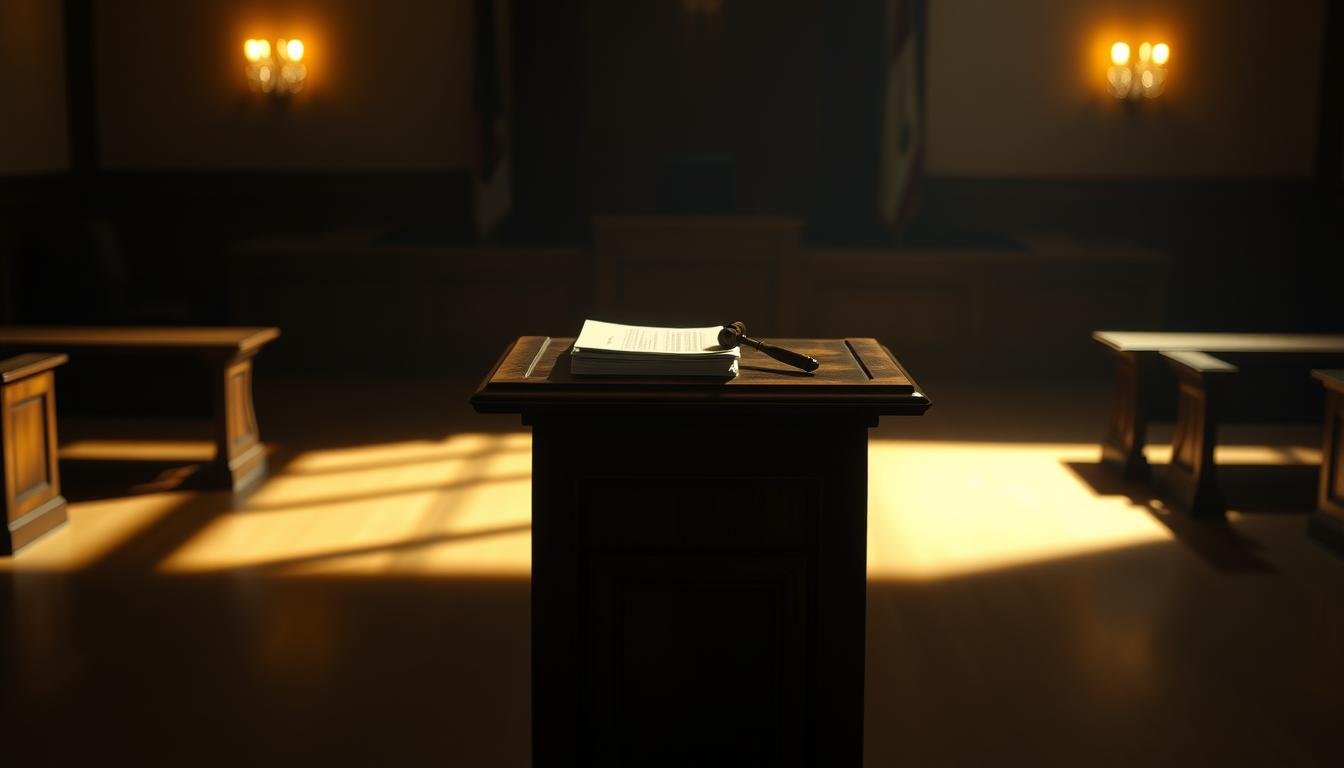Surprising fact: Courts in the United States exclude key evidence in roughly one of every twenty contested searches, a practice that can decide the outcome of a trial.
The exclusionary rule is a constitutional doctrine that bars evidence gathered in violation of a defendant’s rights. It rests mainly on the Fourth Amendment, with ties to the Fifth and the Fourteenth Amendments.
Announced for federal cases in Weeks v. United States (1914), and applied to states by Mapp v. Ohio (1961), the doctrine aims to deter unlawful police conduct and protect judicial integrity. The U.S. Supreme Court has shaped related concepts like the “fruit of the poisonous tree.”
The doctrine is powerful but not absolute. Courts have carved exceptions such as good-faith, independent source, and inevitable discovery. Those limits often determine whether disputed evidence reaches the jury.
Key Takeaways
- The doctrine prevents unlawfully gathered evidence from being used at trial.
- It is rooted in the Fourth Amendment and tied to other constitutional protections.
- Weeks and Mapp mark key moments in federal and state application.
- The U.S. Supreme Court recognizes both the doctrine and several exceptions.
- The rule serves both deterrence and preservation of court integrity.
Defining The Exclusionary Rule: What It Is And Why It Matters
When government action crosses constitutional lines, courts may exclude the resulting evidence from trial. This doctrine bars the State from using proof gathered through unreasonable searches and other violations of individual rights.
Purpose: The measure aims to deter unlawful investigative methods and to protect judicial integrity. Courts ask whether suppression will reduce misconduct without imposing undue social costs on public safety.
The limit usually applies at criminal trials and not to civil suits, grand jury hearings, or parole proceedings. Judges examine the facts, the nature of the violation, and how closely the contested evidence links to the misconduct.
| Context | Typical Application | Reasoning |
|---|---|---|
| Criminal Trial | Evidence May Be Suppressed | Deterrence and integrity of the court |
| Grand Jury | Often Admissible | Investigative function preserved |
| Civil Proceedings | Rarely Suppressed | Different policy balance |
| Parole/Revocation | Limited Application | Public safety concerns |
Later sections track how courts balance costs and benefits and how decisions in the united states constitutional context shaped modern tests for exclusion.
Constitutional Foundations: Fourth Amendment, Due Process, And Judicial Integrity
The Fourth Amendment sets the standard for searches and seizures and helps determine whether disputed evidence may be used at trial.
Textually, the amendment provides that people are secure in their persons, houses, papers, and effects against unreasonable searches and seizures, and that warrants issue only on probable cause.
Fourth Amendment Text And The Protection Against Unreasonable Searches And Seizures
The amendment’s language anchors the doctrine by linking admissibility to constitutional compliance. Courts treat this text as the starting point for suppression questions.
From Self-Incrimination To Selective Incorporation: Fifth And Fourteenth Amendment Links
Early cases like Boyd connected search protections with self-incrimination. Weeks then grounded suppression under the Fourth Amendment for federal prosecutions.
Mapp used the Fourteenth Amendment’s Due Process clause to apply core protections against the states, ensuring uniform treatment of rights nationwide.
Deterrence And Judicial Integrity As Core Justifications
The U.S. Supreme Court has said two goals justify exclusion: deterring unlawful police conduct and preserving judicial integrity. These aims shape exceptions and limits.
| Constitutional Source | Role | Practical Effect |
|---|---|---|
| Fourth Amendment | Defines search-and-seizure limits | Controls admissibility of evidence |
| Fifth Amendment | Protects against self-incrimination | Interacts with search protections |
| Fourteenth Amendment | Incorporates protections to states | Uniform application across jurisdictions |
For more detailed Supreme Court guidance, see this key Supreme Court guidance: constitutional exclusion analysis.
Historical Evolution And Landmark Supreme Court Cases
Major Supreme Court decisions have steadily reshaped how courts treat improperly obtained evidence.
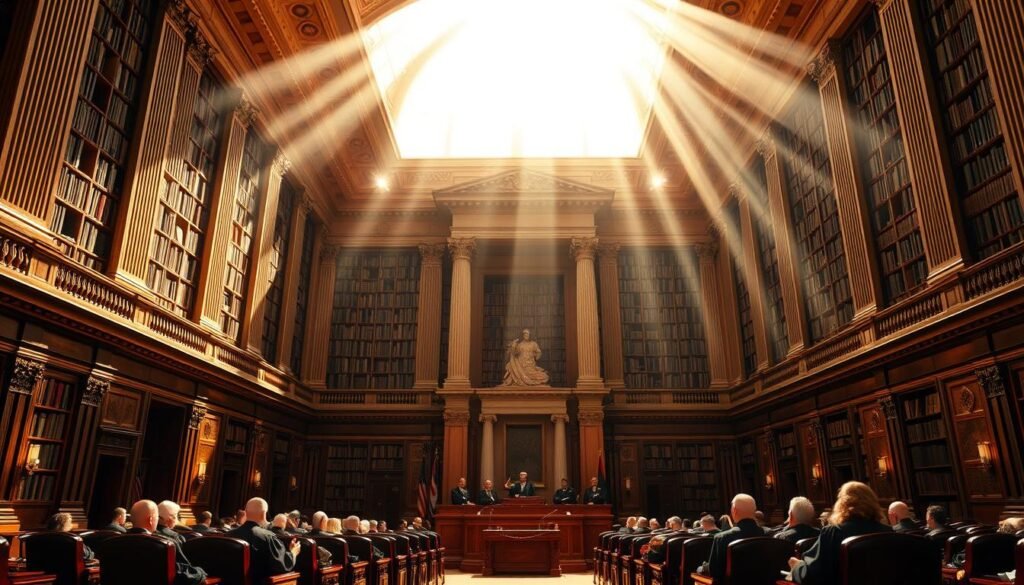
From Boyd And Weeks To Silverthorne: Early Federal Doctrine
Boyd v. United States (1886) limited compulsory production of private papers. Weeks v. United States (1914) then announced that federal courts must bar illegally seized evidence.
Silverthorne Lumber Co. v. United States (1920) extended that protection to derivative proof, establishing the “fruit of the poisonous tree” concept.
Wolf, Mapp V. Ohio, And Incorporation To The States
Wolf v. Colorado (1949) initially declined to impose exclusion on states. The landscape changed with Mapp v. Ohio (1961), where the U.S. Supreme Court applied the doctrine to state prosecutions via the Fourteenth Amendment.
Post-Mapp Developments: Leon, Hudson, Herring, And Utah V. Strieff
Later decisions narrowed application. United States v. Leon (1984) created a good-faith exception.
Hudson v. Michigan (2006) refused suppression for knock-and-announce breaches, Herring v. United States (2009) tolerated isolated negligence, and Utah v. Strieff (2016) applied attenuation where an outstanding warrant intervened.
State Perspectives And The Demise Of The Silver Platter Doctrine
Elkins v. United States (1960) ended the silver platter workaround, aligning federal and state practice. Many states still offer broader exclusionary protections under their constitutions or statutes.
Takeaway: This survey shows how cases balanced deterrence, judicial integrity, and public safety when deciding whether contested evidence may appear at trial.
Exclusionary Rule In Criminal Law: Scope, Standing, And Operation At Trial
Courts treat suppression as a focused remedy that governs trial use of evidence obtained after unjustified searches or seizures.
The remedy typically applies at criminal trials and not to civil litigation, grand jury proceedings, or parole revocation hearings. Federal courts and state tribunals follow the same constitutional baseline since Mapp, though states may provide broader protections.
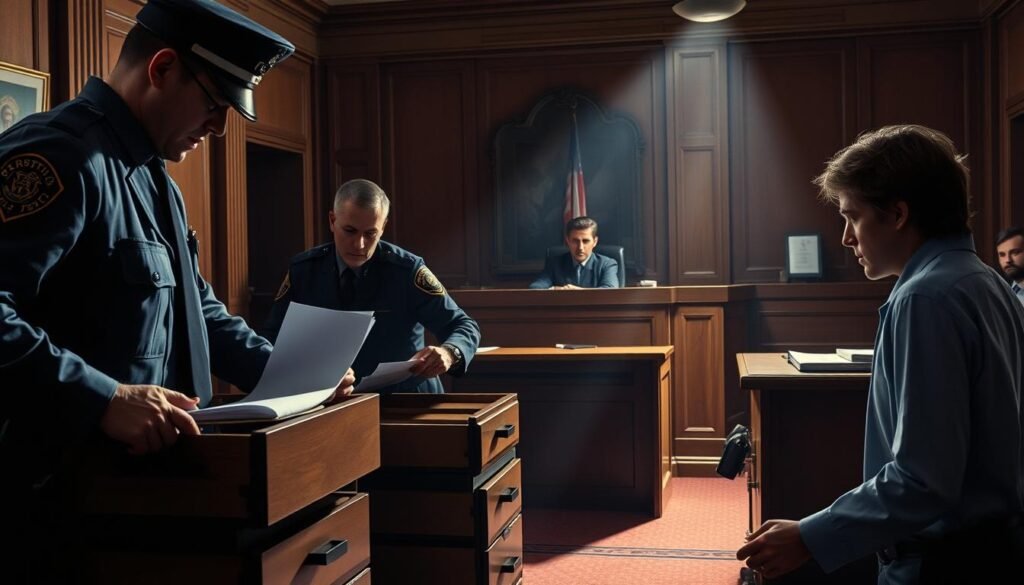
Where The Rule Applies: Criminal Trials, Not Civil, Grand Jury, Or Parole Revocations
Scope: Admission is barred mainly at trials where the State seeks to prove guilt. Proceedings such as grand juries or parole matters rarely trigger suppression because policy balances differ.
Standing And Personal Rights: Limiting Who Can Seek Suppression
Only the defendant whose privacy or property interests were invaded may move to suppress. Courts reject vicarious claims except in narrow jus tertii situations.
| Issue | Typical Outcome | Practical Effect |
|---|---|---|
| Criminal Trial | Evidence May Be Excluded | Can alter charges or force dismissal |
| Grand Jury | Usually Admissible | Investigative function preserved |
| Parole/Administrative | Limited Suppression | Public safety often weighs against exclusion |
Court analysis focuses on whether suppression will deter unlawful police conduct while protecting truth-seeking. Suppressed items can include physical evidence and statements that flow from a violation. Because each stop or home entry varies, outcomes are highly fact-dependent and can reshape trial strategy.
Fruit Of The Poisonous Tree: Derivative Evidence And Attenuation
When later leads flow from a tainted source, judges assess whether those fruits should ever reach a jury.
Tracing Taint: Direct Versus Indirect Evidence After An Unlawful Search Or Seizure
The fruit poisonous tree doctrine, born in Silverthorne Lumber Co. v. United States (1920), bars proof that stems from an initial illegal act. That can include fingerprints taken during unlawful custody or testimony uncovered after illegal wiretaps.
Court analysis separates direct taint from derivative taint. Direct taint is evidence seized at the scene. Derivative evidence arises when officers use tainted leads to find new material.
“If the later discovery is a product of exploitation of the illegality, suppression often follows.”
Attenuation can break the causal chain. Examples include a voluntary return to custody or discovery of an outstanding warrant that severs connection to the prior violation fourth concerns.
| Type | Typical Outcome | Example |
|---|---|---|
| Direct Taint | Suppressed | Items seized during illegal entry |
| Derivative Taint | Often Suppressed | Leads from unlawful wiretap |
| Attenuated Evidence | May Be Admitted | Valid warrant found later (Utah v. Strieff) |
| Independent Source/Inevitable Discovery | Admitted | Separate lawful channel discovers same evidence |
Courts ask whether officers exploited the tainted source or reached the material by a genuinely independent source. If a lawful path would have produced the same result, the doctrine allows admission under independent source or inevitable discovery. The final outcome turns on factual detail, timelines, and voluntariness at suppression hearings.
Key Exceptions And Doctrines That Limit Exclusion
Several well‑established doctrines limit how courts apply suppression and often admit contested proof despite initial misconduct. This section summarizes the main doctrines that narrow exclusion and the policy goals behind them.
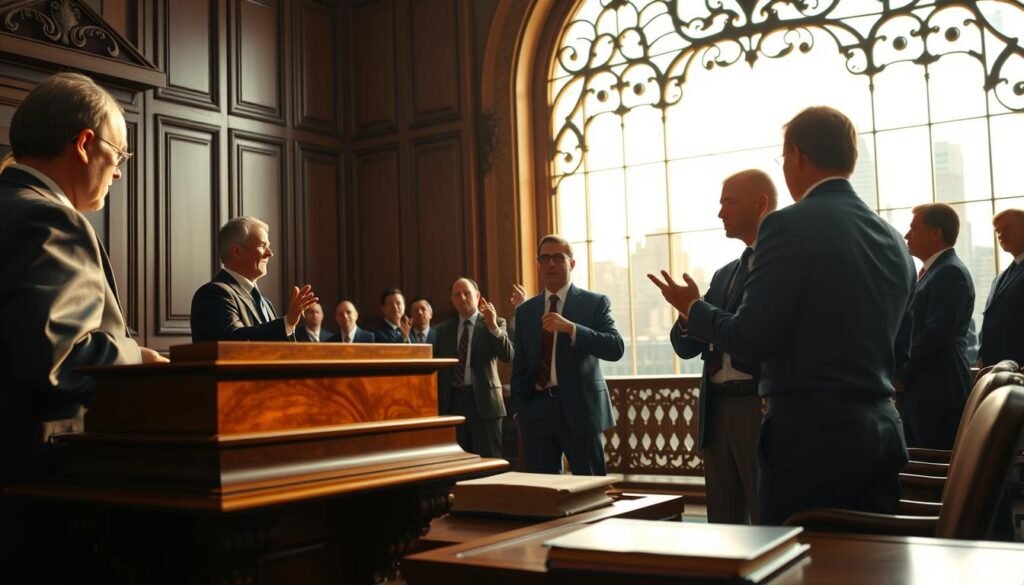
Independent Source And Inevitable Discovery
The independent source doctrine admits evidence later obtained through a lawful path unrelated to the original illegality.
Inevitable discovery, endorsed in Nix v. Williams, permits admission when the State shows it would have found the same evidence by lawful means. Both doctrines focus on causation rather than punishment.
Good‑Faith Reliance On Warrants And Reasonable Police Conduct
United States v. Leon created a good‑faith exception when officers rely on a warrant they reasonably believe valid. Herring extended similar logic to negligent record errors by the police.
The rationale is deterrence: exclusion targets deliberate or systemic misconduct, not isolated mistakes by reasonable actors.
Attenuation, Knock‑And‑Announce, And Impeachment Use
Attenuation may break causal links so that derivative items are admissible. Hudson v. Michigan held that knock‑and‑announce breaches do not always require suppression.
Illegally obtained items may still be used for impeachment when a defendant testifies. That use prevents gamesmanship while limiting prosecution’s case‑in‑chief.
Private Search Doctrine And The Miranda Distinction
The private search doctrine permits admission of material discovered by private actors if the government does not expand the private scope.
Miranda violations affect statements, but derivative physical evidence may still be admitted. Judges weigh probable cause and the reasonableness of searches when applying these limits.
| Doctrine | Typical Effect | Key Case |
|---|---|---|
| Independent Source | Admit | Silverthorne / N/A |
| Inevitable Discovery | Admit | Nix v. Williams |
| Good‑Faith | Admit | United States v. Leon |
Practical Application In Federal And State Courts
Application often begins with a written motion that frames the alleged defect and lists the specific evidence the defense seeks to bar.
Motions To Suppress, Probable Cause Challenges, And Case Outcomes
Defendants file motions under constitutional provisions and statutes such as N.C.G.S. 15A-971. Common grounds include lack of probable cause, warrant defects, warrantless searches without a valid exception, and statements taken without required warnings.
- Judges review affidavits for particularity and factual support for warrants and for the legality of searches.
- At hearings, officers testify about observations and steps; defense counsel probes gaps and credibility.
- If key evidence is suppressed, prosecutors may dismiss or alter charges rather than proceed to trial.
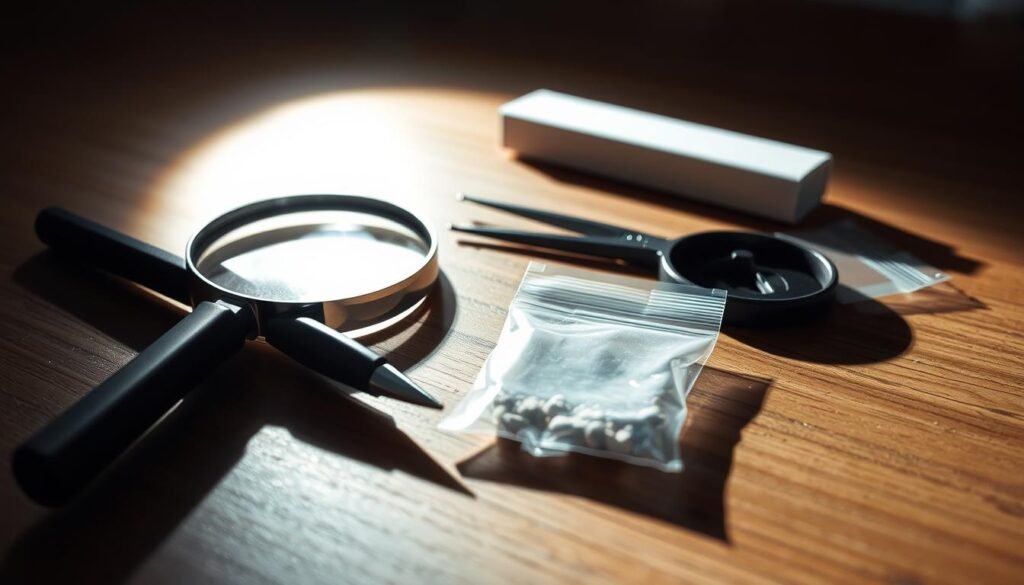
| Stage | Focus | Typical Outcome |
|---|---|---|
| Suppression Hearing | Affidavits, witness testimony | Evidence May Be Excluded |
| Post‑Suppression | Prosecutor Assessment | Dismissal or Plea Negotiation |
| Appellate Review | Legal Standards, Factual Findings | Rulings Affirmed Or Reversed |
The same constitutional floor applies across federal courts and state tribunals, though state constitutions sometimes offer broader protection. Outcomes shape plea talks, resource allocation, and agency training.
Best Practices: Document searches carefully, follow procedure, and anticipate litigation over reasonableness so pivotal evidence survives review.
Policy Debates: Criticism, Defense, And Parallel Construction Concerns
Debate over the proper remedy for unlawful searches has animated judges, scholars, and policymakers for decades.
Critics like Benjamin Cardozo called the practice a technicality that can let guilty parties avoid accountability after police mistakes. The U.S. Supreme Court has weighed deterrence against social costs in modern decisions such as Hudson and Herring.
“Technicality” Versus Constitutional Remedy: Competing Views
Supporters argue that without exclusion the constitutional text would lack bite and that admitting tainted proof legitimizes poor police conduct.
“Courts must not endorse unconstitutional methods by admitting their fruits.”
Proposed Alternatives: Tort Remedies, Restitution, And Legislative Limits
Scholars suggest civil damages, restitution, or statutory limits as supplements that compensate victims without barring probative evidence.
- Some proposals focus on fee‑shifting and stronger oversight of federal drug enforcement and parallel construction.
- Others ask for clearer disclosure rules to preserve judicial review of probable cause.
Conclusion: The debate balances effective policing and constitutional restraints. For more on investigative origins and transparency, see the secret origins of evidence.
Conclusion
Modern doctrine frames a careful balance between constitutional protections and the public interest. The Fourth Amendment anchors whether contested evidence reaches a jury.
Mapp v. Ohio ensured that state and federal courts share the same baseline. Landmark decisions from Weeks United States through Silverthorne, Leon, Hudson, Herring, and Utah v. Strieff show how courts weigh deterrence, judicial integrity, and social costs.
Practically, motions to suppress and careful factfinding shape outcomes. Courts parse timing, causation, and attenuation to decide whether evidence from unlawful searches or later leads must be excluded.
Result: The doctrine limits improper police conduct while preserving trustworthy proof, strengthening the legitimacy of United States courts and protecting defendants’ rights at trial.
